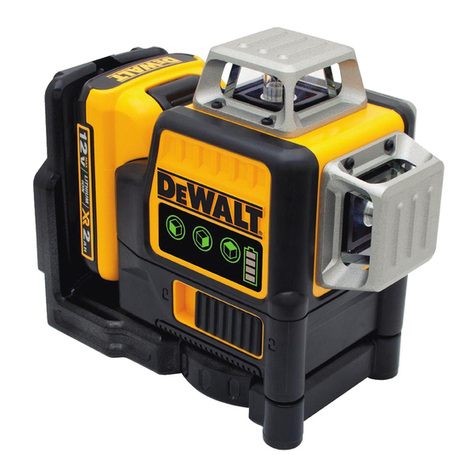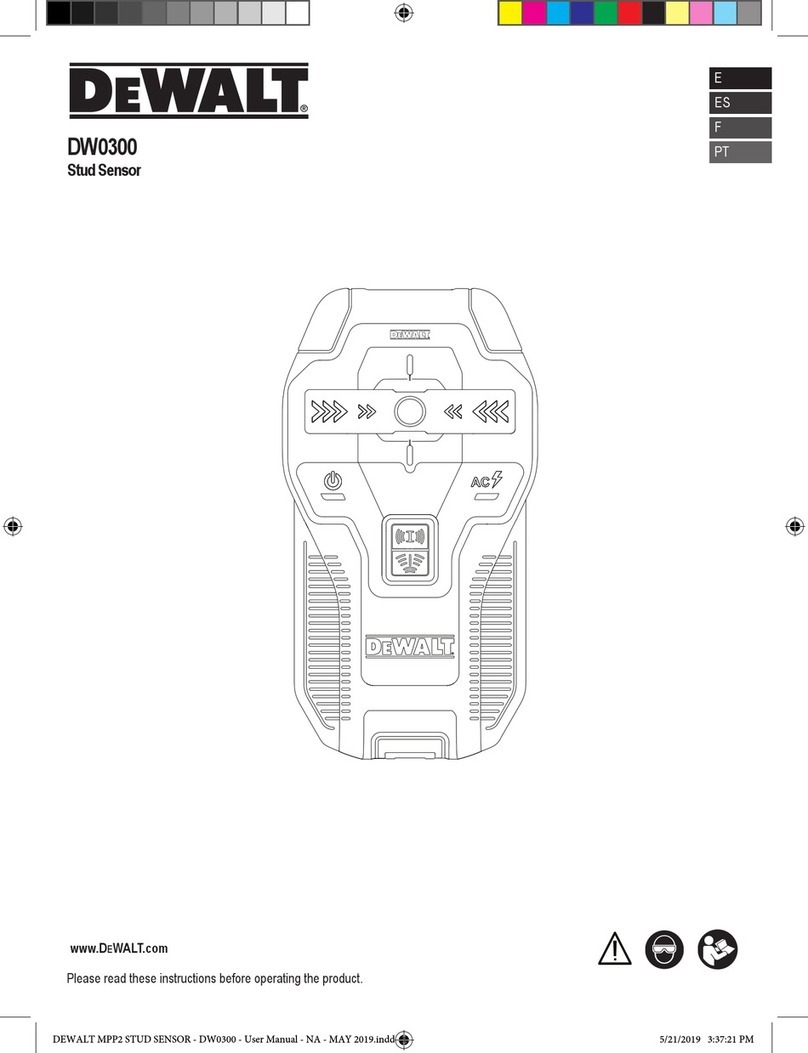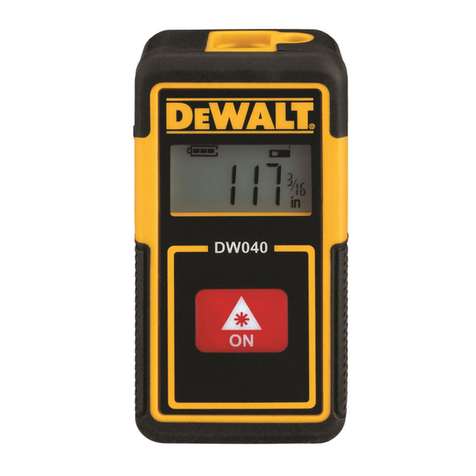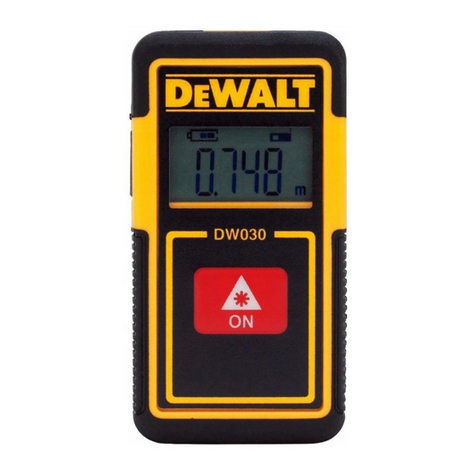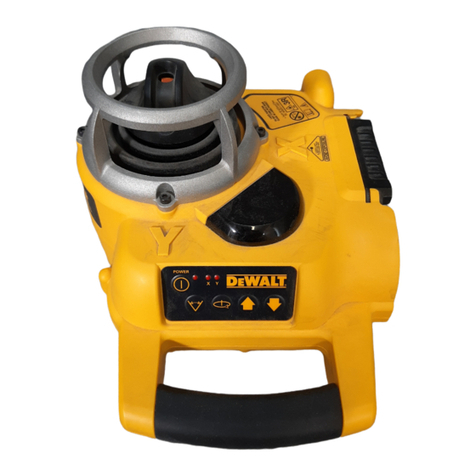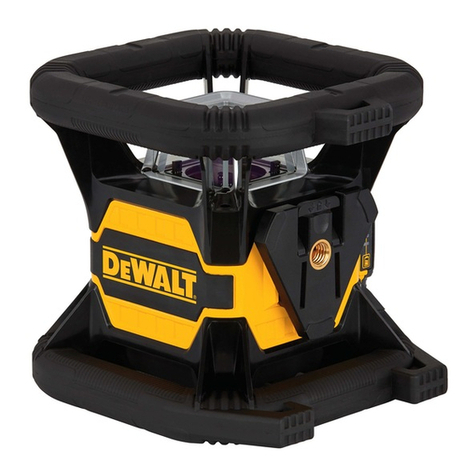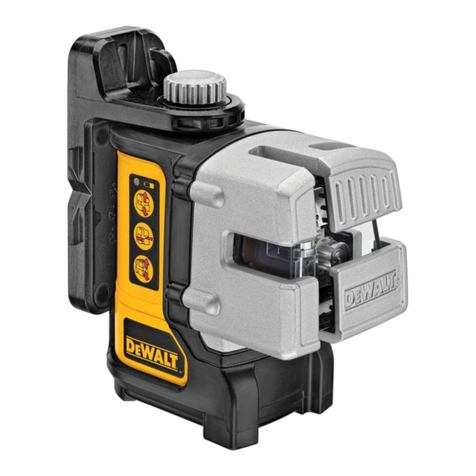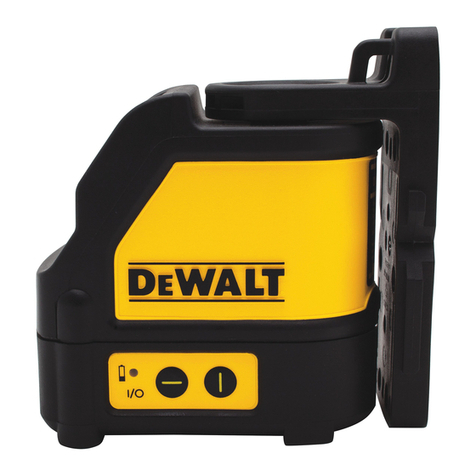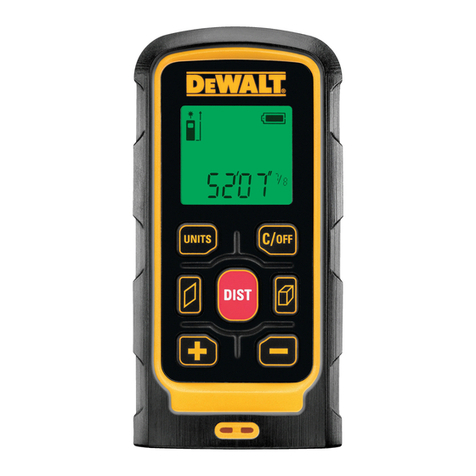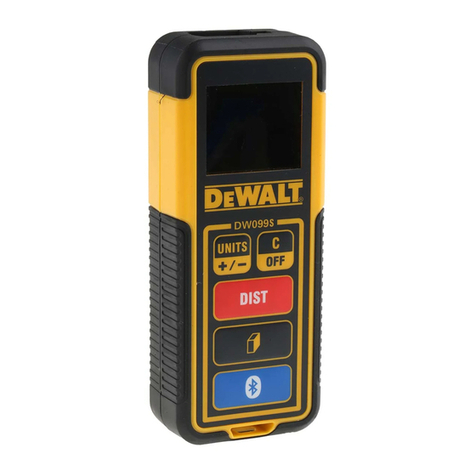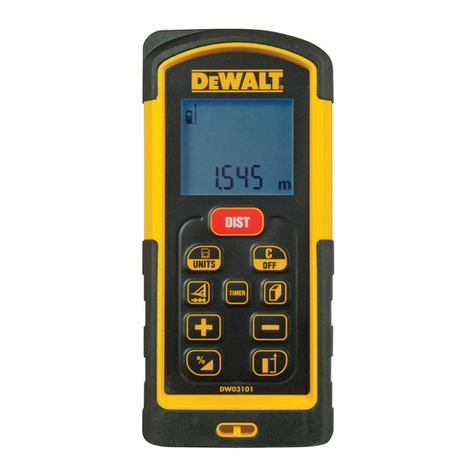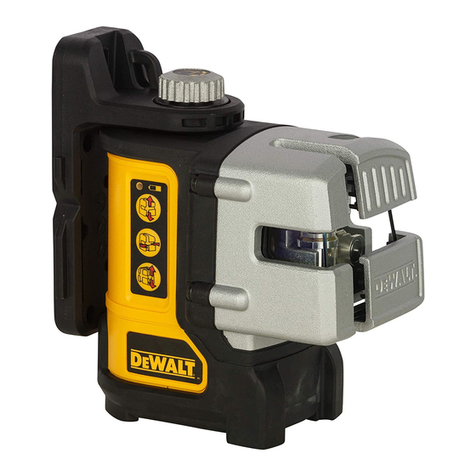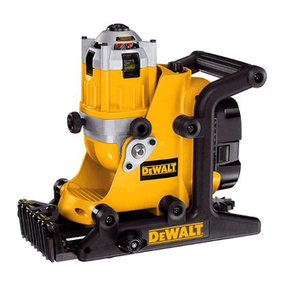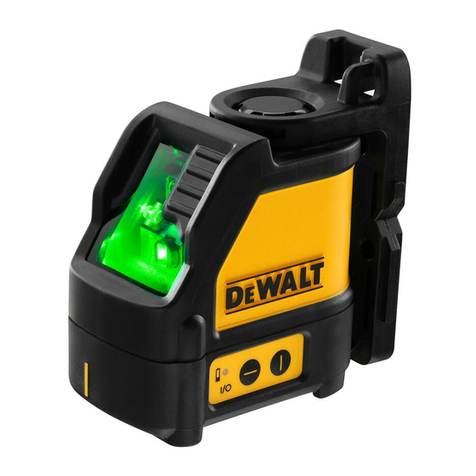English
1
IF YOU HAVE ANY QUESTIONS OR COMMENTS ABOUT
THIS OR ANY DEWALT TOOL, CALL US TOLL FREE AT:
1-800-4-DEWALT (1-800-433-9258).
WARNING! Read and understand all instructions.
Failure to follow all instructions listed below may result
in electric shock, fire and/or serious personal injury.
SAVE THESE INSTRUCTIONS
Safety Instructions for Lasers
• Do not operate the laser in explosive atmospheres, such as
in the presence of flammable liquids, gases, or dust. Power
tools create sparks which may ignite the dust or fumes.
• Use the laser only with the specifically designated batteries.
Use of any other batteries may create a risk of fire.
• Store idle laser out of reach of children and other untrained
persons. Lasers are dangerous in the hands of untrained
users.
• Use only accessories that are recommended by the
manufacturer for your model. Accessories that may be suitable
for one laser, may create a risk of injury when used on another
laser.
• Tool service MUST be performed only by qualified repair
personnel. Repairs, service or maintenance performed
by unqualified personnel may result in injury. To locate
your nearest DEWALT service center call 1-800-4-DEWALT
(1-800-433-9258) or go to http://www.dewalt.com on the Internet.
• Do not use optical tools such as a telescope or transit to
view the laser beam. Serious eye injury could result.
• Do not place the laser in a position which may cause anyone
to intentionally or unintentionally stare into the laser beam.
Serious eye injury could result.
• Do not position the laser near a reflective surface which
may reflect the laser beam toward anyone’s eyes. Serious
eye injury could result.
• Turn the laser off when it is not in use. Leaving the laser on
increases the risk of staring into the laser beam.
• Do not operate the laser around children or allow children
to operate the laser. Serious eye injury may result.
• Do not remove or deface warning labels. If labels are
removed user or others may inadvertently expose themselves to
radiation.
• Position the laser securely on a level surface. Damage to the
laser or serious injury could result if the laser falls.
• Dress properly. Do not wear loose clothing or jewelry.
Contain long hair. Keep your hair, clothing, and gloves away
from moving parts. Loose clothing, jewelry, or long hair can be
caught in moving parts. Air vents often cover moving parts and
should also be avoided.
WARNING: Use of controls or adjustments or performance
of procedures other than those specified herein may result in
hazardous radiation exposure.
WARNING! DO NOT DISASSEMBLE THE ROTARY LASER.
There are no user serviceable parts inside. Disassembling
the rotary laser will void all warranties on the product. Do not
modify the product in any way. Modifying the tool may result in
hazardous laser radiation exposure.
• The label on your tool may include the following symbols.
V .......volts nm..... wavelength in nanometers
mW .....milliwatts IIIa..... Class IIIa Laser
.....laser warning symbol
